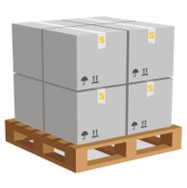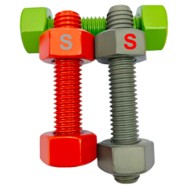
Decoding apparel proportions often reads like an insider puzzle
- Registering your form dimensions starts smart shopping
- Obtain exact bust, waist and hip figures before ordering
- Consult each label's size guide prior to purchase
Steer clear of relying just on marked sizes which may confuse Use your exact numbers to validate against the sizing table. Discovering wardrobe identity is an individual experiment.
Deciphering the puzzle of measurement charts
Measurement mismatches create widespread shopper frustration. Converting measurement systems sometimes tests patience, since companies implement varied fit benchmarks. Armed with guidance and tools you can navigate fit complexities.
- Kick off by mapping which regional sizing the maker adopts. Regularly you will see US, UK, European and Asian benchmarks.
- Proceed to compare chest, midriff, hips and measurement of length. Contrast the listed dimensions with your own stats.
- Lastly, review the company's fit guidance for special advice. You will usually find advice, alteration suggestions and guidance.
Spotting the right fit while you shop online
The universe of fit systems sometimes bewilders customers. Sizing tags are inconsistent so medium sizes may not match. Such variation stems from the distinct fit charts brands maintain. Hence commence by measuring yourself accurately before buying. Use a fabric tape to record bust, waist and hip measurements. Avoid relying purely on your customary size label. Even under one maker, cuts and types can change the fit. Determining the best fit is a process of trial and adjustment.

Deciding on stock sizes or personalised fitting
For certain products the decision is between off-the-shelf and made-to-fit options. Pros and cons exist for both standard and custom paths. Generic sizes supply ready availability and cost benefits. Made-to-order dimensions accommodate unique spatial constraints
- Review needs against available funds before settling on size
- Obtain accurate size figures for room or body before ordering
- Examine different manufacturers and proposals prior to order
Ultimately the suitable measurement varies with your circumstances.
Getting comfortable with global size equivalences
Converting across international and brand scales may be challenging. Thankfully simple conversion tables make the task manageable. Begin the process by understanding common apparel and shoe metrics. Consult cross-reference charts to bridge different systems. Understand that physique and proportions affect fit accuracy. Review customer experiences and size hints prior to purchase.
Sizing decoded for everyday shoppers
Confronting size tables frequently puzzles shoppers. Manufacturers typically have bespoke measurement approaches, nonetheless this roadmap will equip you to interpret size info.
- Kick off by recording your dimensions using a tape measure
- Following that, juxtapose your measurements with the size guide
- Remember physique as shape impacts how clothes drape
At last, physical fitting is the best means to secure correct sizing.
A thorough overview of standard men's and women's sizes
Sizing issues become acute when shopping over the internet. Consequently, consult this resource for men's and women's standard measures. From trousers to tops and dresses these pointers help select size.
- Primarily, be aware sizing shifts between labels and territories
- Also record waist, hip, bust and shoulder metrics with precision
- Finally don't be afraid to size up when between measurements
Adopting these practices makes reading size charts straightforward. Wishing you great shopping success!

A straightforward guide to kids' clothing measurements
Choosing suitable children’s sizes often perplexes parents. Because kids grow fast, size selection needs frequent review. Depend on the producer's chart rather than age indications. Capture measurements for chest, waist and height to ensure fitHow to measure bust, waist and hips like a pro
Achieving an ideal fit requires knowing your exact body measures. Prepare a soft tape measure and an assistant to record figures. Maintain a straight posture with shoulders loose and feet spread
A guide to interpreting XS, S, M, L, XL and XXL
The current world of sizing contains many inconsistencies. Sizes diverge dramatically between brands, making consistency rare. Reviewing detailed size ranges makes decoding simpler. Let's break down what each size label signifies in reality!
Celebrating body size inclusivity

Supporting size inclusion combats restrictive ideals. This involves rejecting narratives that demand one ideal shape. We should nurture communities that support body confidence for all.
- Adopt routines that strengthen body confidence and care Adopt routines that strengthen body confidence and care Adopt routines that strengthen body Size confidence and care Make a habit of embracing body positivity in everyday life
- Bear in thought that attractiveness spans diverse body types
- Challenge media and messages that endorse restrictive standards
- Choose body positivity and self-acceptance every day
